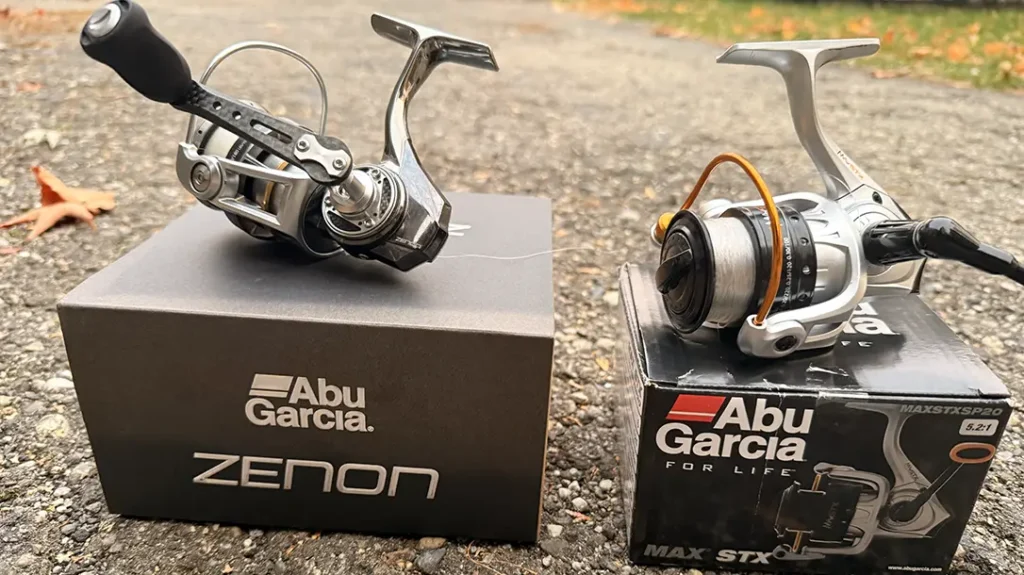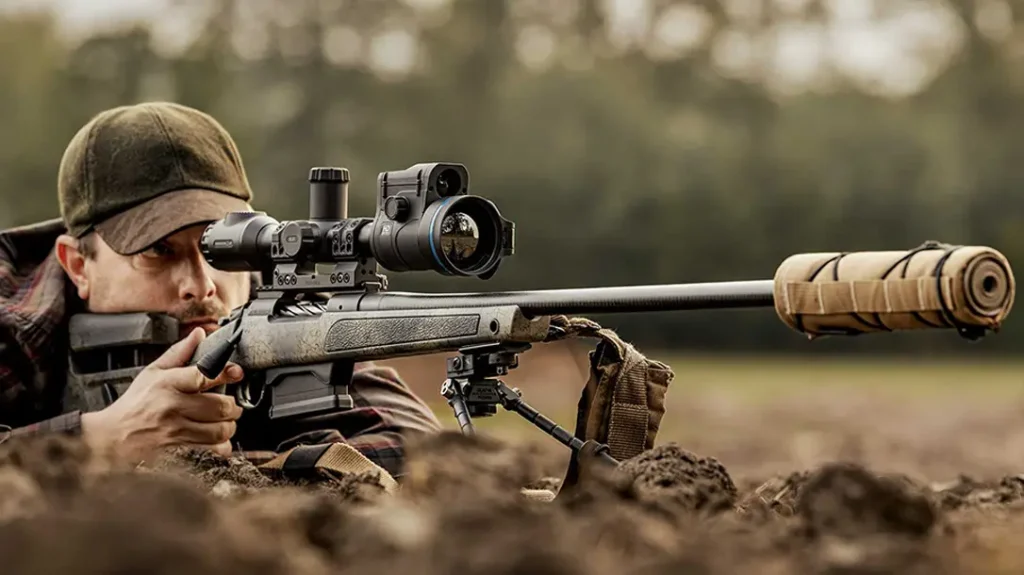Generally considered the second-oldest successful semi-auto pistol, the iconic Mauser C96 was developed and introduced in the 1890s and signaled the beginning of the modern era of the autoloading pistol. While the Borchardt C93 may have earned the title of being the first successful autoloader, it did not prove to be particularly popular (soon being overshadowed by the P.08 Luger pistol). Developed concurrently with the Borchardt pistol was a new .30-caliber “bottleneck” cartridge, the 7.65x25mm. This round featured a stepped neck like a modern rifle cartridge, and it proved to be a very capable round. In fact, a round almost identical to the Borchardt cartridge, the 7.63x25mm, soon thereafter found a home in the Mauser C96.
While the name of the renowned gunmaker Paul Mauser is indelibly attached to the famous C96 pistol (known popularly as the “Broomhandle” due to the unique shape of the protruding pistol grip), he did not design the firearm. In fact, three brothers who worked at the Mauser factory developed the design over a period of several years, beginning in 1893. By March of 1895 the brothers, Fidel, Friedrich and Josef Feederle, had a working prototype made, and by 1896 Paul Mauser applied for patents in several countries as he quickly assessed the potential impact of such a revolutionary design.
Advertisement — Continue Reading Below
First Steps
Manufacture of the 7.63x25mm C96 pistol began in 1896. Various prototypes were made with magazines with capacities ranging from as few as six to as many as 20 rounds. Most were designed to accept carbine-style shoulder stocks, if desired. These wooden shoulder stocks also doubled as holsters for the pistols. In early 1897 full production began and the design was finalized. Interestingly, serial numbers were not always consecutive; at later dates they sometimes went back to the lower numbers. Despite the impressive capabilities of the C96, sales proved to be disappointing, especially to the German military as they preferred the Luger P.08 as it was easier to shoot and better balanced.
While no nation officially adopted the “Broomhandle” Mauser, they were used in one form or another by the militaries of a number of countries. However, between 1916 and 1918, 150,000 Broomhandles were manufactured for Germany in the standard 9mm Luger chambering to supplement the short supply of P.08s, Germany’s official sidearm. They were ordered by the Die Gewehr-Prüfungskommission (Rifle Proving Commission) to make up for shortages and losses. They were marked with a red “9” on the grips to differentiate them from the 7.63x25mm models as they were externally similar. The Germans also produced a M712 Schnellfeuer, which is a full-auto version of the Broomhandle.
Unfulfilled Promise
The Broomhandles were manufactured from 1896 until 1937. Following WWI, the Treaty of Versailles prohibited Germany from manufacturing military weapons. Full production resumed around May of 1922 and continued until the late 1930s. According to some reports, all the production records at the Mauser factory were destroyed in 1945. Consequently, this makes it more difficult for collectors and historians to study the Mauser. However, it is estimated that a total of slightly more than a million Mauser pistols were produced. This does not include Chinese versions or the Spanish Astra pistols. In addition, there were about a thousand carbine versions produced, and if you run across one today it would be a very valuable collector’s item.
Advertisement — Continue Reading Below
Gun Details
To load the C96, you open the action and put the stripper clip in the groove machined directly into the barrel extension/upper receiver. Once the stripper clip is in, just shove the cartridges down into the magazine of the pistol. You can also single load rounds if desired. Once the safety, a lever located to the left of the hammer, is disengaged you are ready to shoot. Loading and shooting can be pretty quick once you get used to the system.
The C96 Mauser has a locked-breech, short-recoil system that is fairly strong and reliable. The rectangular bolt moves within the barrel extension, which was machined as a one-piece unit with the barrel. Beneath the barrel is the locking piece, which is a one-piece steel block with a locking lug that engages a slot in the lower surface of the bolt. Shortly after production resumed in 1922, it was changed to two corresponding slots and lugs, and it stayed that way until production ceased in the late 1930s.
When a cartridge is fired, the recoil drives back the bolt, which is locked to the barrel extension by the bolt lock. When this happens, the bolt block pivots downward to disengage the lugs and allows the bolt to travel rearward. This subsequently cocks the hammer and extracts the empty case out of the chamber. The case strikes the ejector, which is machined into the receiver, and throws the case away from the gun. The bolt coming forward picks up a new round and re-engages the locking lugs as it closes. The inclined surface at the rear of the bolt also meets the surface at the top of the lock frame, forcing the lugs to engage firmly.
Advertisement — Continue Reading Below
Fuel For The Fire
In 1930, Russia brought out the 7.62×25 Russian Tokarev round. Essentially, it has the same dimensions as the 7.63x25mm Mauser round, but therein lies a problem. The Tokerav round is 0.5 millimeters shorter but otherwise the same. I use the same set of dies to reload both rounds. The newer Tokarev round is loaded somewhat hotter than the Mauser offering, making it dangerous to fire in a Broomhandle. The rounds look identical, but I must emphasize again to not mix them up. Failure to heed this advice may result in a ruined pistol and injuries to the shooter and bystanders.
If you can’t find factory ammo for the C96 and are a reloader, then you are in luck. Starline makes plenty of quality brass casings at a reasonable price. Suitable bullets of various weights and styles are also available from Hornady, Speer and Sierra, among others. Cast bullets can also be successfully used with proper loads. For this test, I used some from Hornady and cast bullets from a couple of sources. Just to clarify, the Hornady bullets are swaged and are softer than the typical cast bullet. Shooting swaged bullets at higher velocities will lead up your barrel, so keep that in mind when working up loads.
My objective in making ammo for this pistol was to have something that approximated the military ballistics and would prove reliable. Keeping in mind that the design is over a century old and that my particular sample is about 85 years old, I didn’t try for the last foot-per-second in velocity. Rather, I wanted ammunition that was safe and enjoyable to shoot.
Advertisement — Continue Reading Below
Range Report
The ammuniton is easy to make by using regular reloading techniques. Belling the case mouth is necessary, especially with lead bullets. You can buy an inexpensive Lee die that has two inserts that cover almost any caliber that you will encounter, and it also bells the case mouth just fine. Small pistol primers also work fine, and I used Winchester primers for this shooting test.
Shooting the gun proved to be an interesting experience. Since the magazine is located in front of the triggerguard, the balance is different than most other autopistols. The recoil was very mild, enabling me to consequently shoot accurately and have long shooting sessions. The trigger pull isn’t too bad for such a gun, though the hammer fall is a little heavy. It is a typical single-action auto, meaning you cock the hammer for the first shot and then pull the trigger for each succeeding shot. The gun can be fired rapidly without any problems, though the muzzle will climb a little.
Advertisement — Continue Reading Below
Final Thoughts
When you take something like a Broomhandle to the range, it generally attracts a crowd. Some of the more knowledgeable shooters may know what you have, but the majority of shooters do not have a clue. I also get some pleasure in explaining what it is and letting other shooters try it out. They get a kick out of shooting the antique, and sharing knowledge with other shooters is what it’s all about. Many shooters also don’t often get the chance to shoot such a neat gun.
How good is the Broomhandle? While it may not have been initially successful upon its release, overshadowed by follow-up designs in Europe such as the P.08 Luger and the American 1911 pistol, it still deserves a place of honor in the history of firearms development. Although ungainly looking and a bit odd in the handling department, the “Broomhandle” heralded a new age of autopistol design that would soon overtake the military and later police and civilian markets to supplant the revolver. Proving that an autopistol could reliably deliver potent power, the C96 Mauser set the stage for the future.
Mauser C96 Specs
| Caliber: 7.63x25mm |
| Barrel: 5.5 inches |
| OA Length: 12.3 inches |
| Weight: 40 ounces |
| Grips: Wood |
| Sights: Inverted “V” front, notch tangent rear |
| Action: SA |
| Finish: Blued |
| Capacity: 10+1 |
This article was originally published in “Military Surplus.” For more information, visit outdoorgroupstore.com.
Advertisement — Continue Reading Below
































